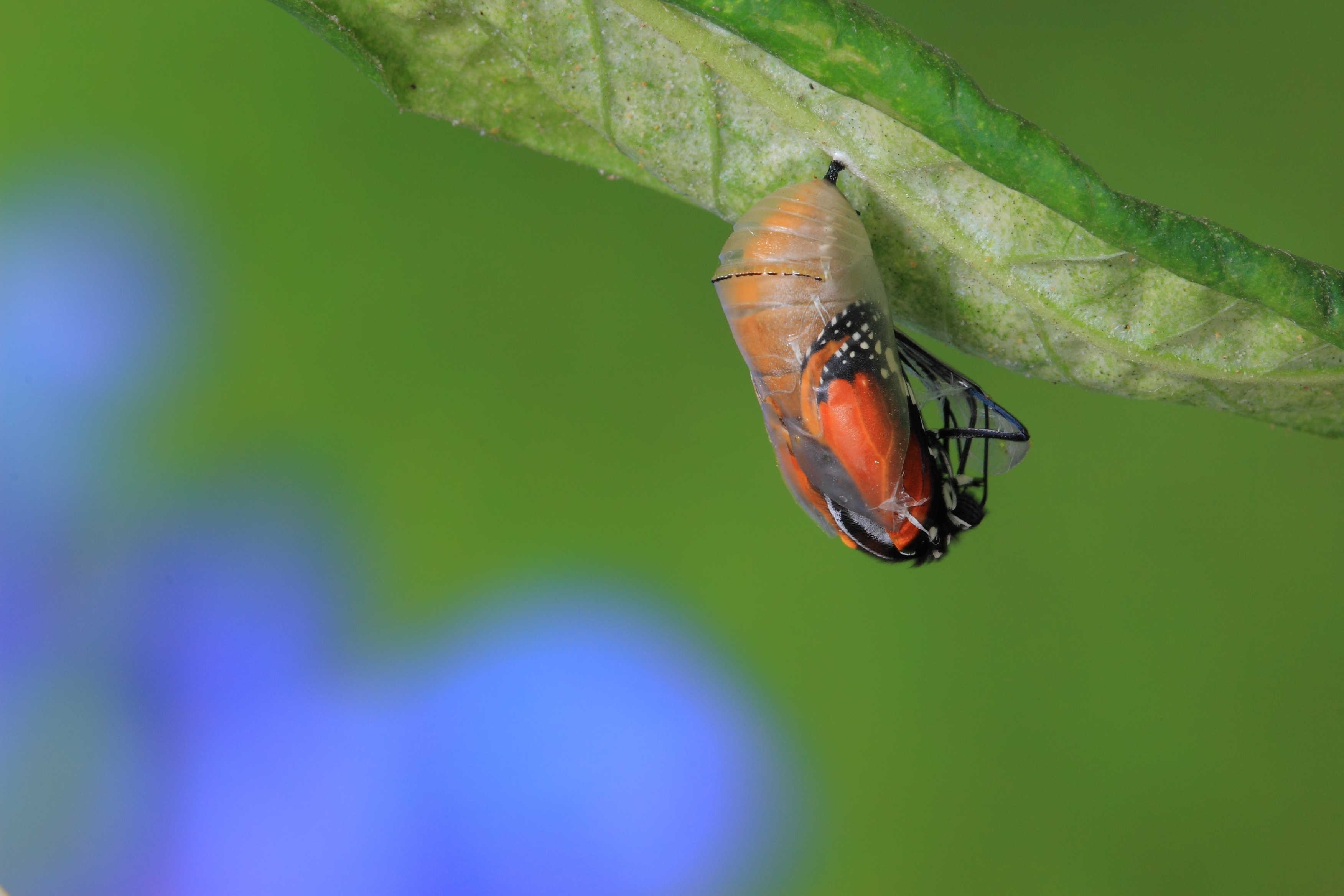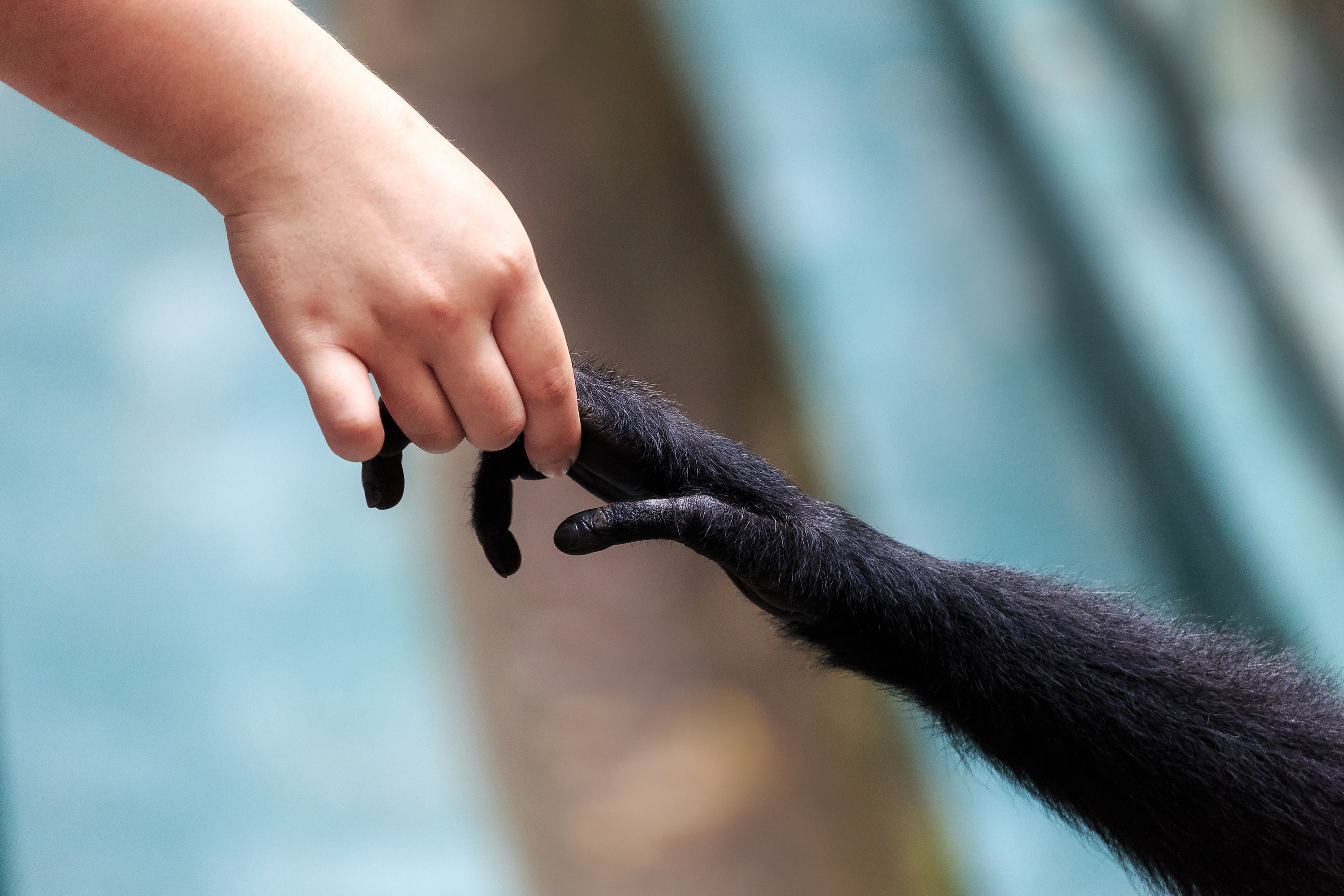Metamorphosis is interesting because it tells us about what life is in general. For example, take the most evident phenomenon of metamorphosis: insect metamorphosis. In this case, metamorphosis shows that there is life between two bodies that have nothing in common from an anatomical, ecological or ethological viewpoint.
A caterpillar and a butterfly do not share the same body. They do not share the same face. They are totally different. Moreover, they do not share the same ethos or moral identity. On the one hand, you have a caterpillar, which is a life form occupied by the question of nutrition. For a caterpillar, the world is a huge McDonald’s where it can simply eat. On the other hand, you have the butterfly, which is a life form whose main concern is having sex.
Life between identities
The caterpillar and the butterfly have nothing in common. It’s difficult for eating and having sex to be compatible, but this becomes possible through metamorphosis. Caterpillars and butterflies do not share the same world; they do not live in the same world. Apparently, insects have developed the ability to undergo metamorphosis so that children and adults are not in competition. They are not competing with each other because they live in different worlds. It’s as if my daughter and I were living in totally different apartments.
That shows that life can never be reduced to a single form, a single face, a single anatomical identity – or a single moral identity. Whenever we say that we are defined by an ethos or a moral identity, we are wrong because life is precisely what allows us to pass from one moral identity to another. We could say the same about the world. Life can never be reduced to a single world; life exists between worlds.
Metamorphosis is the relationship between all individuals within a species, and the evidence of that is what we call birth. In some ways, birth is a black hole in our culture because our culture was made by males and for males – in other words, by bodies who are not able to give birth to other bodies. If I ask someone to name films, poems, novels or even scientific papers about death, most people will answer with a huge list. But if I ask the same question about birth, most people can’t give more than three or four examples.
However, birth is an extremely interesting phenomenon. It is the evidence that in order to have life, the body of someone who has already lived must be transformed. In order to live, to exist, to come to the world, a living being cannot just take a piece of matter that was never occupied by life. It has to take from an already living body – to steal from this already living body – a piece of matter to live again in a different form.
For instance, I am the mix of the recycling process of two bodies who already lived: my mother and my father. I’m just trying to give these lives another chance. Every living being is a second life, a second chance, in a way that is both very strange and very interesting.
From this perspective, to give birth means to rejuvenate one’s own life. You can rewind the anatomical, physiological and, in a way, spiritual history of your body to day zero and live again for a second time. A different metamorphic life has been imposed on this piece of your body. So every individual within a species is a metamorphosis of a previous existing individual.
Metamorphosis between species
There is also evidence that metamorphosis is the relationship between species. It’s what we call evolution. What Darwin and the other biologists have proved is that every species has not existed since the beginning of the world but is the transformation, the metamorphosis, of a previously existing species.
We are exactly like an individual within a species. We are the recycling process of a species that already existed – the second chance of this species, which has just changed a couple of elements. Since every species cannot delete the totality of what made the species before it, that means that every species is a patchwork, a collection of different living species.
This is true from a genetic point of view because our DNA contains elements from very different forms of life. But it’s also evident from an anatomical or physiological point of view. Every time you look into a mirror, you see your eyes, mouth, nose and ears – organs that we share with thousands of different living species. In a way, we are already a walking zoo, not just a species – we are bio-diverse within ourselves. That’s why thinking about metamorphosis is so important; it enables us to find the Other within ourselves.
Metamorphosis also shows that every life is more ancient than the body carrying it. Since the life I’m living was already living before I was born, the life carried by my body is more ancient than my body itself. For instance, I am 44 years old, plus 30, which was the age of my mother when she gave birth to me. However, since my mother was also born, you have to add the age of her own mother when she gave birth, and so on.
You could say that the age of every living being is as old as life itself on Earth. We are both very young but also very, very old. We carry the life of the very first living being to exist on this planet. That means that we share the same flesh, the same life. All species are just the metamorphosis or reincarnation of this very first common life. That’s why we have to respect other life forms. They are not just companions; they are our flesh, our body. They are, in a way, our lives outside of us.


